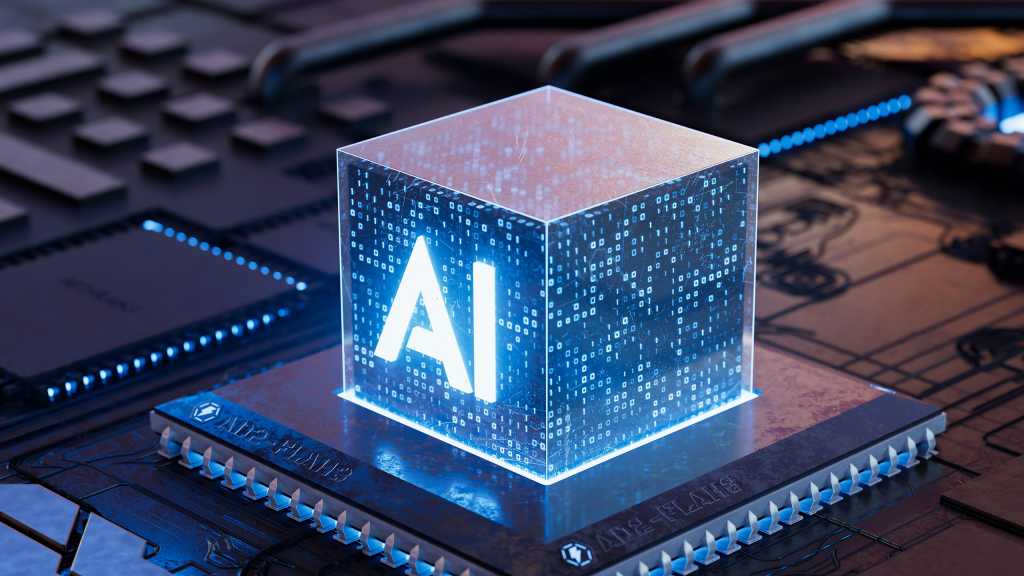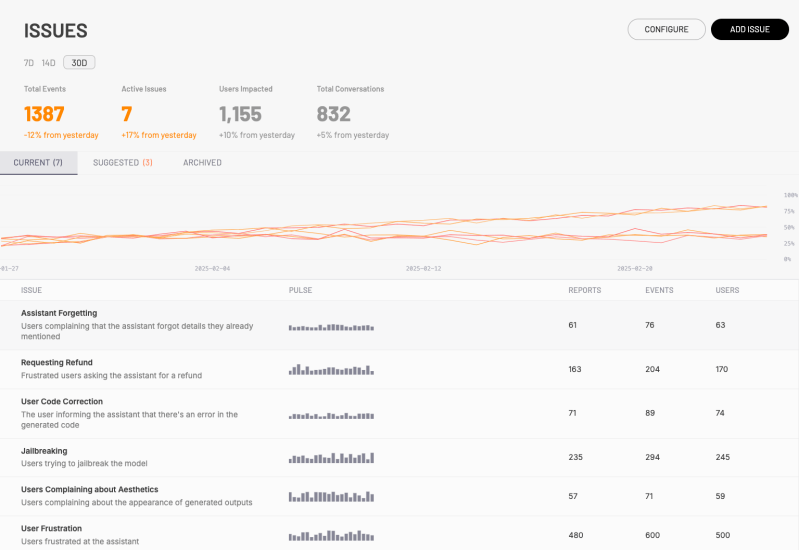Join our daily and weekly newsletters for the latest updates and exclusive content on industry-leading AI coverage. Learn More
Microsoft announced a significant expansion of its Copilot Studio platform at Build 2025 today, introducing multi-agent systems that allow different AI agents to collaborate on complex business tasks, along with new developer tools, security enhancements, and integration with WhatsApp.
The suite of announcements represents Microsoft’s most ambitious attempt yet to make AI agents more practical for enterprise use, addressing key limitations that have hindered broader adoption of agent technology in business settings.
“We’re seeing from customers doing large-scale production rollouts that governance and observability become even more critical,” said Ray Smith, VP of AI Agents at Microsoft, in an exclusive interview with VentureBeat. “The beauty of Copilot Studio is that we provide a managed infrastructure framework with built-in lifecycle management and comprehensive governance capabilities.”
How Microsoft’s new multi-agent system is transforming enterprise workflows
At the heart of the announcements is Microsoft’s new multi-agent system, which enables agents built with Copilot Studio, Microsoft 365, Azure AI Agents Service, and Azure Fabric to work together, delegating tasks to one another to complete complex business processes.
This capability addresses a fundamental challenge organizations have faced when implementing agent technology. “Creating a reliable process within a single agent is extremely challenging,” Smith explained. “Breaking it down into multiple agents not only improves maintainability and simplifies solution building, but it also significantly enhances overall reliability.”
The system enables scenarios such as a Copilot Studio agent pulling sales data from a CRM, handing it to a Microsoft 365 agent to draft a proposal in Word, and then triggering another agent to schedule follow-ups in Outlook.
Microsoft is also emphasizing interoperability through support for the agent-to-agent protocol recently announced by Google, potentially enabling cross-platform agent communication.
‘Computer use’ feature brings human-like UI interaction to AI agents without API dependencies
Another key announcement is “computer use” for Copilot Studio agents, which allows agents to interact with desktop applications and websites by controlling interfaces directly — clicking buttons, navigating menus, and typing in fields — even when APIs aren’t available.
“When APIs aren’t available, this feature can interact directly with user interfaces — whether desktop applications, browsers, or other platforms,” Smith said. “It provides what we call ‘no-cliffs extensibility’ and operates based on intent rather than pixel coordinates, unlike traditional desktop automation. This goal-oriented approach makes it significantly more robust.”
This capability is currently available through Microsoft’s Frontier program for eligible customers with 500,000+ Copilot Studio messages and a U.S.-based environment.
Customizable model selection and Python-powered analytics supercharge enterprise AI solutions
Microsoft is giving organizations more flexibility with their AI models by enabling them to bring custom models from Azure AI Foundry into Copilot Studio. This includes access to over 1,900 models, including the latest from OpenAI GPT-4.1, Llama, and DeepSeek.
“Start with off-the-shelf models because they’re already fantastic and continuously improving,” Smith said. “Companies typically choose to fine-tune these models when they need to incorporate specific domain language, unique use cases, historical data, or customer requirements. This customization ultimately drives either greater efficiency or improved accuracy.”
The company is also adding a code interpreter feature that brings Python capabilities to Copilot Studio agents, enabling data analysis, visualization, and complex calculations without leaving the Copilot Studio environment.
Smith highlighted financial applications as a particular strength: “In financial analysis and services, we’ve seen a remarkable breakthrough over the past six months,” Smith said. “Deep reasoning models, powered by reinforcement learning, can effectively self-verify any process that produces quantifiable outputs.”
He added that these capabilities excel at “complex financial analysis where users need to generate code for creating graphs, producing specific outputs, or conducting detailed financial assessments.”
WhatsApp integration extends AI agent reach to billions of global users
Starting in early July, organizations will be able to publish Copilot Studio agents to WhatsApp, enabling them to reach customers through one of the world’s most popular messaging platforms.
“WhatsApp is obviously a key channel. Globally, it’s pretty huge,” Smith explained. “So that became a high priority for us through the various channels and integrations, to unlock that as a way for end users to interact at a time that suits them.”
This addition, along with a new SharePoint channel (now generally available), significantly expands the reach of custom agents beyond Microsoft’s own ecosystem.
Microsoft bridges the developer experience gap with VS Code extension and enhanced admin controls
For professional developers, Microsoft is launching a Visual Studio Code extension for Copilot Studio, bringing familiar tooling and workflows to agent development. The extension provides features like IntelliSense, color formatting, and “find all references” functionality, enabling developers to edit agents directly from within Visual Studio Code.
IT administrators gain new tools as well, including a centralized “Agents & connectors” page in the Microsoft 365 Admin Center for managing the full lifecycle of Copilot agents. This interface allows admins to view all agents, filter by metadata, assign sensitivity labels, manage connector behavior, and block or delete agents that violate security policies.
AI-powered agent discovery solves the ‘which agent do I need?’ problem for end users
As organizations develop more specialized agents, Microsoft is addressing the challenge of agent discovery with new in-conversation agent recommendations. This feature suggests the most relevant agent based on a user’s needs, dynamically recommending handoffs when appropriate.
“It’s fundamentally like an agentic RAG pattern,” Smith explained, referring to retrieval-augmented generation. “It uses vector databases and indexing based on the description of the agent. When you describe the task, it’s looking up and going, ‘Hey, I think you should look at this agent.’”
The system only recommends agents the user has access to, respecting existing permissions structures.
Overcoming enterprise AI implementation hurdles: Microsoft’s roadmap for success
Despite the new capabilities, organizations still face significant challenges when implementing multi-agent systems. Smith recommends focusing on specific use cases rather than attempting comprehensive transformations from the outset.
“Best practices have been customers who’ve focused on a use case or problem to start with, broken that down into parts, and looked at embedding an agent at various parts of that process,” he said. “They go from one agent to two agents, and then effectively they’re stitching it together in a multi-agent solution.”
He emphasized the importance of hands-on experience with the tools: “You need to know good at what it’s not… it’s a mix of tooling that you will use to transform your business process.”
Microsoft’s enterprise AI strategy positions it to lead the next wave of workplace transformation
These announcements collectively strengthen Microsoft’s position in the enterprise AI market, where competition with Google, Amazon, and specialized AI startups continues to intensify.
By addressing key enterprise requirements like security, governance, and interoperability, while simultaneously expanding the platform’s capabilities through features like computer use and code interpretation, Microsoft is creating a more complete offering for organizations looking to deploy AI agents at scale.
“Microsoft is very much in a leading position in building and managing and scaling these agentic solutions or agentic workflows,” Smith noted. “I think we’ve hit an important inflection point of some of the key feature asks from customers.”
The company’s dual approach — supporting both no-code tools for business users and professional development environments for engineers — also sets it apart from competitors that focus primarily on either developers or business users.
“Our platform serves experienced developers who prefer to use Visual Studio for direct access to APIs and frameworks,” Smith said. “It also accommodates business users with limited coding experience who want to start with a specific business problem and rapidly prototype solutions using natural language.”
While Microsoft has addressed many of the key challenges for enterprise AI adoption with these announcements, Smith hints at future developments focusing on agent discovery and accessibility.
“I think the next piece will be all of these agents surfacing within a marketplace or catalog and then accessible from AI assistants like Copilot or Microsoft 365 Copilot and beyond,” he said.
The Build 2025 announcements represent a significant step forward for Microsoft’s AI strategy, but the company continues to face the challenge of driving widespread adoption of these technologies across industries and helping organizations realize tangible business value from their AI investments.
As Smith concluded, “At the core of all transformation isn’t really technology itself. It’s about delivering solutions that are more cost-effective, faster, higher quality, and that ultimately create a superior customer experience.”
Daily insights on business use cases with VB Daily
If you want to impress your boss, VB Daily has you covered. We give you the inside scoop on what companies are doing with generative AI, from regulatory shifts to practical deployments, so you can share insights for maximum ROI.
Read our Privacy Policy
Thanks for subscribing. Check out more VB newsletters here.
An error occured.



















